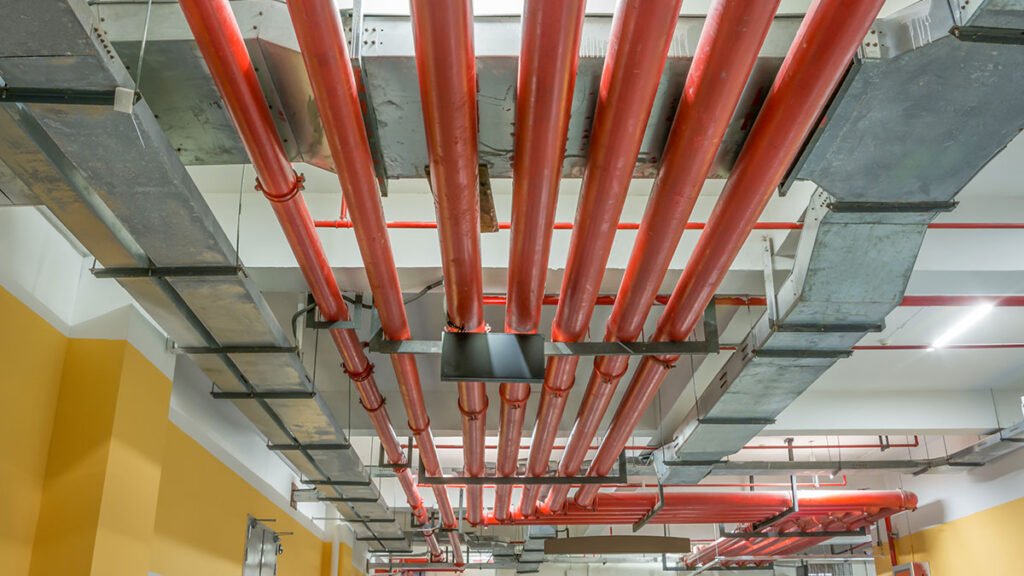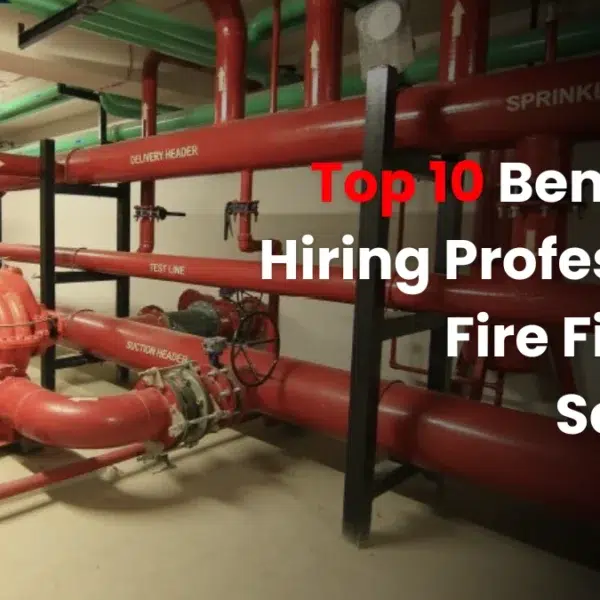10 Essential Fire Safety Tips for Manufacturing Plants

One of the most important components of operational integrity in industrial facilities is fire safety.
Fire safety refers to careful planning, adherence to safety procedures, and regular upgrades with regular changes in technology improvements. It is because of the high-energy machinery, potentially dangerous materials, and a dynamic work environment that manufacturing facilities have special concerns.
Fire safety for people who are in charge of handling or looking after a factory is about saving lives, businesses, and valuable property, not just about complying with the law. One fire may cause disastrous damages, putting lives in danger, ruining equipment, and affecting corporate operations from combustible chemicals to high-temperature machinery, industrial facilities pose special fire dangers that we at Damia Global Services are aware of.
We have prepared ten essential fire safety tips according to our years of experience in industrial safety and fire safety to help manufacturing plants reduce risks and maintain a safe working environment.
Essential Fire Safety Tips:
Fire safety tips help to reduce fire-related damage. These measures prevent fires and determine their spread if they occur. Risk analysis and identification are the most important in any fire safety plan. It relates to identifying any possible fire threats present in the building. Complex equipment, combustible dust, and flammable materials are always found in manufacturing facilities. Customizing a fire safety strategy requires identifying which areas are in danger. Regular audits and inspections are important for emerging hazards to be found and dealt with.
Key Aspects of Fire Safety:
Prevention – You stop fires before they start.
Protection – You control fires if they break out.
Preparedness – Teaching occupants how to respond.
What are Fire Hazards?
A fire hazard is referred to increase in the risk of a fire or blocks escape during an emergency.
The main reasons for fire in the workplace are:
- Electricity – Neglected or misused wiring can cause short circuits.
- Rubbish and waste material – Accumulated waste can help fire spread quickly.
- Smoking – Carelessly thrown cigarette butts or lit matches are a major fire hazard.
- Cooking – Kitchens have materials that can start and fuel fires.
Why Fire Safety Matters in Buildings?
Fire safety plays an important role in building safety. It has:
- Designing safer structures (fire-resistant materials, clear exits).
- Training occupants on fire risks and responses.
Basic Fire Science for Employees
Understanding fire helps prevent and control it. Fire is a chemical reaction (combustion) requiring three elements:
- Heat (ignition source)
- Fuel (flammable material)
- Oxygen (air supply)
Removing any one element stops the fire.
Why Employees Need Fire Safety Knowledge
Workers should know:
- How fires start.
- How to prevent them.
- How to use fire extinguishers.
A strong fire safety program depends on awareness and action.
10 Essential Fire Safety Tips for Manufacturing Plants
1. Install & Maintain Advanced Fire Suppression Systems
A robust fire suppression system (such as sprinklers, foam-based systems, or CO₂ suppression) is crucial for immediate fire control.
- Automatic detection and suppression systems can prevent small fires from escalating.
- Regular maintenance ensures optimal functionality—schedule inspections at least twice a year.
- Specialized suppression solutions may be needed for high-risk areas like chemical storage or electrical rooms.
2. Conduct Comprehensive Fire Risk Assessments
Proactive hazard identification is key to preventing fires.
- Evaluate potential ignition sources (electrical faults, welding sparks, overheating machinery).
- Assess storage practices for flammable liquids, gases, and combustible dust.
- Review emergency response plans and update them based on new risks.
3. Proper Storage & Handling of Flammable Materials
Improper storage of chemicals, oils, and gases is a leading cause of industrial fires.
- Use OSHA-approved flammable storage cabinets.
- Separate incompatible chemicals to prevent reactions.
- Implement spill containment measures to avoid accidental ignition.
4. Enforce Strict Electrical Safety Protocols
Electrical malfunctions account for 25% of industrial fires.
- Regularly inspect wiring, circuit breakers, and machinery connections.
- Avoid overloading power outlets—use industrial-grade surge protectors.
- Train employees on lockout/tagout (LOTO) procedures when servicing electrical equipment.
5. Employee Fire Safety Training & Drills
Smoking near flammable materials is a preventable hazard.
- Designate smoking zones far from production areas.
- Use signage and disciplinary measures to enforce compliance.
- Provide safe disposal bins for cigarette butts.
6. Implement a Zero-Tolerance No-Smoking Policy
A well-trained workforce is the best defense against fire emergencies.
- Conduct bi-annual fire drills to ensure quick, orderly evacuations.
- Train staff on fire extinguisher use (PASS method: Pull, Aim, Squeeze, Sweep).
- Assign fire wardens to guide evacuations and conduct headcounts.
7. Maintain Clear & Accessible Emergency Exits
Blocked exits can turn a small fire into a tragedy.
- Keep pathways free of obstructions (pallets, equipment, debris).
- Use photoluminescent exit signs for visibility in smoke-filled environments.
- Ensure doors open outward and are never locked during working hours.
8. Control Combustible Dust Accumulation
Dust from wood, metal, or chemicals can explode if ignited.
- Use industrial vacuum systems instead of compressed air for cleaning.
- Install dust collection systems in high-risk areas.
- Follow NFPA 652 standards for combustible dust safety.
9. Monitor & Maintain Heat-Generating Equipment
Machinery like furnaces, boilers, and welding stations pose fire risks.
- Install heat sensors and automatic shut-off mechanisms.
- Schedule preventive maintenance for high-temperature equipment.
- Keep flammable materials at least 3 feet away from heat sources.
10. Use Fire-Resistant Construction Materials
Passive fire protection can slow fire spread, allowing more evacuation time.
- Install fire-rated walls, doors, and dampers.
- Apply intumescent coatings to structural steel for added protection.
- Use flame-retardant insulation in critical areas.
Why Fire Safety in Manufacturing Cannot Be Ignored
- Financial Impact: A single fire can cost millions in damages and downtime.
- Regulatory Compliance: OSHA, NFPA, and local fire codes require strict adherence.
- Human Cost: Worker safety must always be the top priority.
Additional Safety Best Practices from Damia Global Services
✔ Install thermal imaging cameras to detect overheating equipment before fires start.
✔ Keep fire extinguishers (ABC-type) every 50 feet for quick access.
✔ Partner with a fire safety consultant for customized risk assessments.
At Damia Global Services, we specialize in industrial fire prevention, safety training, and emergency preparedness. Let us help you build a safer, compliant, and fire-resistan
Conclusion
Fire safety is essential to a manufacturing facility’s productive, efficient operation. Because industrial and manufacturing facilities work round the clock in such high-risk environments, it is important to make sure that plant machinery, products, and people are protected to the maximum. Additionally, there are fire safety inspection software solutions that can be used to manage an organization’s full range of fire and life safety inspections. So, manufacturers should never wait till things get on fire – literally and figuratively!
📞 Contact us today for a fire safety audit
https://youtube.com/watch?v=cveuVXqrYq4https%3A



